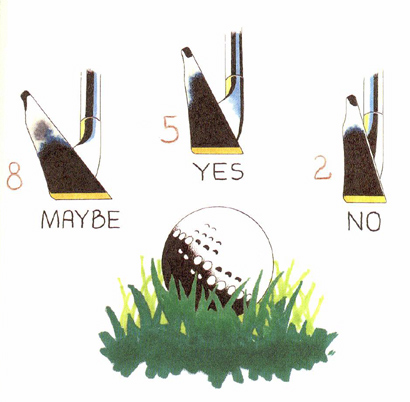Debunking Flyers
Traditional golf instruction tells you that when your ball is sitting in light rough, you have what’s called a ‘flyer’ lie. At impact the grass will come between your clubface and ball, producing a shot with little backspin – sort of a knuckleball. The ball will fly farther and bounce more actively than a crisp shot from the fairway.
That’s true – but only with certain clubs. I’ve found that on short irons (PW, 9, 8) I get true flyers only part of the time. The rest of the time I get bloopers – the ball goes up quickly but then drops down quickly, and the overall distance isn’t any greater than on a fairway shot with the same club.
The middle irons (7, 6, 5, 4) are the true flyer clubs. The ball consistently zings off these clubfaces and jumps into the air, arcing forward as well as upward. It comes down with very little backspin and then bounds forward. Once in an Australian tournament I hit a 250-meter 5-iron from a flyer lie, and I’m sure you’ve had similar experiences.
But once you get down to the long irons – anything from the 3-iron down – the flyer effect virtually disappears. The reason is that the heads of these clubs aren’t deep enough to allow the ball to slide up the clubface at impact. As a result, you get either a normal distance shot – if you’re lucky – or a fluff, as the ball and/or club gets caught in the grass. The fact is, you can usually hit a 5-iron from the rough as far as you can hit a 3-iron from the same lie. For the same reason, you should be careful with fairway woods from grassy lies: a 3-wood rarely works, a 4-wood has a good chance, but a 5-wood is ideal.
